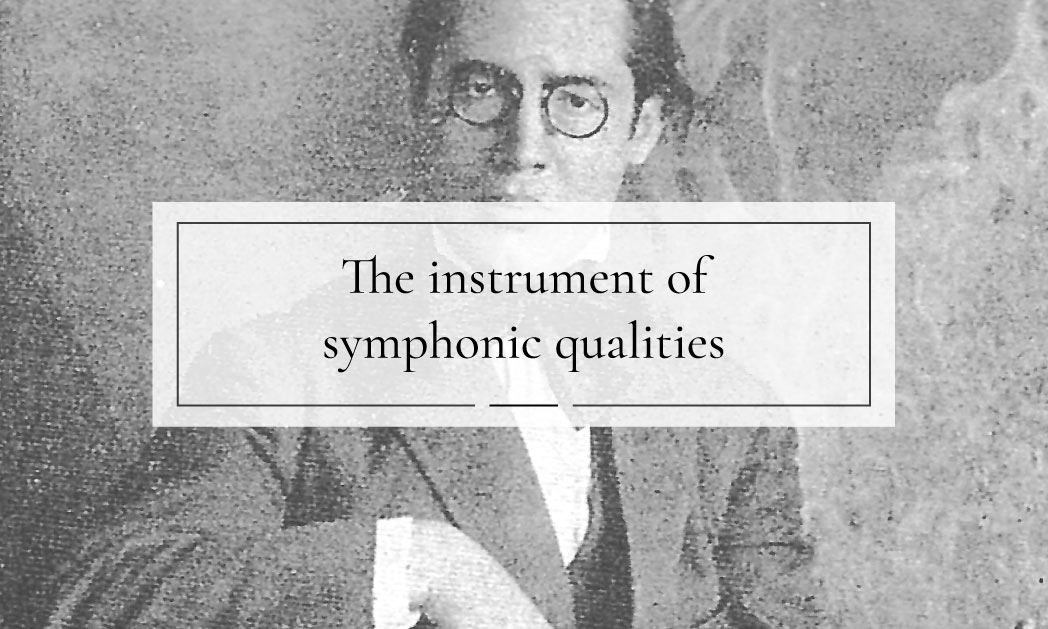Article by Pablo de la Cruz.
Before talking about the history, I am going to situate historically the Ramírez House and its direct origin from the School of Madrid created in 1761 and from which José Ramírez I and his brother Manuel descend, both of them are the protagonists of this story, although life will lead them to separate.
The guitar makers of González y Campo
In Dionisio Aguado‘s Nuevo Método of 1843, (Chantarelle 802) on the page dedicated to the title page, one can see a guitar mounted on the tripod with the head in the shape of an “eight” and French style pegs (guitar Ca 1830) where one can read: “engraved and stamped by Lodre”, and at the foot of the page it is noted: “it will be on sale in Madrid in the guitar shops of González y de Campo, Calle Angosta de Majaderitos, and in the music store of Lodre, Carrera de San Jerónimo today Calle de Zayas, price 90rs”.
Aguado’s mention of the “Guitarrerías” of González y Campo in Calle Majaderitos suggests that, according to González’s date of birth, 1820, he would have been 23 years old in 1843, the date of the edition of the method, and would either have shared the guitarrería with Campo or would have been an advanced officer of the same, as in the Diccionario The Vihuela de Mano and the Spanish Guitar edited by J.L. Romanillos and Marian H. Winspear, there is no mention of any event in this period 1820-1843, in González’s life, until 1849, such as the payment of rent for a flat, which coincides with Aguado’s death in that same year.
If in 1843 the guitar workshops of González and Campo were mentioned, it is very possible that it was the same one, either shared or as Campo’s worker, it is important to underline this because José Ramírez I will enter González’s service in 1870.
Ramírez I will set up his workshop in 1882 when Francisco González died, this postulate further supports my theory of the direct descent of González from the old Madrid school which came from the association “noble art of violeros, guitarreros and all kinds of stringed instruments” founded in 1761 by Lorenzo Alonso (ca1796), Marcos Antonio González (1736-1809) and the violero Julián Fornieles.
There was an economic contribution from its members, they examined the future aspirants by drawing various templates and controlling, in turn, the quality of the products they sold to the consumer in their respective shops.
Marriages to secure the guild
The daughter of M.A. González would marry Manuel Muñoa (1779-1815) the brother of this Antonio, had his own shop that also sold the Aguado Method of 1820, later the daughter of Manuel Muñoa would marry Benito Campo, works or teaches Francisco González, the pupil of this one would be José Ramírez I, this is the mark of the old Madrilenian School to which Juan Moreno (1792-1836) also joins. (1)
It was normal for the guilds to ensure their offspring and continuity, which is why the daughters of the master of the workshop usually married one of the journeymen, unless the latter decided to set up his own business and risk resources to rent a workshop and flat.
The Ramírez guitar of Andrés Segovia
In 1923 Andrés Segovia made his debut in Berlin with his 1912 Manuel Ramírez, a guitar very dear to Segovia, which he would use in his debut in Paris 1924, USA 1928, USSR 1936 and the recordings of his first records in 1926 and 1927 and the recordings of 1932, Variations and Fugue on the Folía de España by M.M. Ponce and 1935, his transcription of the Chacona by J.S. Bach.(2)
After that concert in Berlin, he met Herman Hauser. Segovia was impressed when he was shown the elements that made up his workshop, Hauser scrupulously took all the measurements of the template of the Manuel Ramírez and, the following year, Hauser took to Geneva, where Segovia lived, a guitar exactly like his Manuel Ramírez, but without the quality or the depth of sound that was required, a guitar that Segovia returned to him thanking him for his intention.
Hauser brought him two guitars every year to Geneva, until 1936, when Segovia accepted a guitar superior to his Spanish guitar until then, (3) with that Hauser and later ones from his son Hauser II.
Segovia’s career was plagued by successes and premieres such as the Concerto by Castellnuovo Tedesco in 1939, the Concerto by Villalobos in 1940 and the Fantasía para un Gentilhombre by Joaquín Rodrigo in 1958. (4)
José Ramírez and Andrés Segovia
José Ramírez III met A. Segovia in 1952 at a celebration organised by the guitar milieu on the occasion of his return to Spain, (5) that year, Segovia gave a historic concert in the Alhambra in Granada, although he did not take up residence in Madrid until 1958, with the Madrid premiere of Joaquín Rodrigo’s Fantasía para un Gentilhombre (Fantasia for a Gentleman).
It is quite possible that in remembrance of his pleasant memory of his guitar Manuel Ramírez and to replace his Hauser II, Andrés Segovia asked José Ramírez III for an instrument with symphonic qualities, harmonically perfect, with a balance of bass and treble and with a great projection, that has a deep and soft oscillating singing like a violin and a vibrato in the bass like a cello, and that produces brilliant sounds with a clear sound like the brass wind and cantabile like the woodwind when playing next to the bridge with great contrasts between the strings to highlight the dissonances. (6)
According to what José Ramírez III told me on a visit to his home in October 1993 (his daughter Amalia and I had visited him to show him the recording of “Música para un Paisaje” for guitar and orchestra by Miguel Ángel Linares, which I premiered at the Auditorio Nacional on 7 May 1993 with a Ramírez IV “Especial” model that José Ramírez IV had built), which, according to the Physical Harmonic System, has 885.33 simple vibrations, which corresponds to the tuning frequency of 442.66Hz, i.e. 442Hz (7) “the outgoing wave divides by two when it hits and returns”, just as the orchestras of the 21st century tune today.
In recordings and in large spaces, the sound offers no resistance and hardly suffers alterations when changing the pitch of the sound by tuning in different tuning forks. Finally, according to Mr. Ramírez, he had worked closely with Andrés Segovia for nine years and the latter tried 59 guitars during all this period until 1961, when Segovia premiered his new Ramírez III with a 664mm tuning fork.
There are some historical concerts and recordings that we remember for the moment and have this Ramírez III as the protagonist, the concert at the RAI 1961, N. York “Festival Performing Arts” 1962, Teatro Colón de Buenos Aires 1962, Suite Compostelana by Mompou in 1964 Sonata Mexicana 1967 (although premiered in 1925 with his Manuel Ramírez), also from that period is the live recording of Platero y yo by M.C. Tedesco or the Recital in San Francisco Church in Locarno 1968 with the Theme and Variations by Albert Harris. The guitar of the future was finally a reality.
Pablo de la Cruz
Director of the Andrés Segovia International Festival
Annotations (1) The Vihuela de Mano and the Spanish Guitar by José Luís Romanillos & Marion H. Winspear (2) The Legacy of Andrés Segovia, article by Carlos Andrés Segovia (3) Testimony of Andrés Segovia interviewed by Jak Pfeiffer for TV in 1955 from Danielle Magli's blog. (4) The Legacy of Andrés Segovia, article by Carlos Andrés Segovia. (5) Biographical book by Alberto López Poveda ed University of Jaen. (6) Andrés Segovia Documentary by Christopher Nupen (7) Diccionario de la Música Higinio Anglés Vol I and Sistema Físico Armónico de Acústica físico musical by Antonio Calvo Manzano Ruíz.


